The Endless Fascination of Cizhou Wares, by Rosemary Scott, Senior International Academic Consultant
The ceramics that are known by the term ‘Cizhou wares’ 磁州窯 are probably the most varied group in Chinese ceramic history in terms
of their decoration, and the current sale includes a very interesting selection both of forms and decorative techniques. Amongst these are a number of vessels which may be associated with a particular archaeological site, the name of which is often applied to one specifc type of undecorated Cizhou ware. This is the habitation site of Juluxian in Hebei province 鉅鹿縣 河北省. According to the inscription on a stele dated to the third year of the Xuanhe reign period (宣和1119 – 1125), equivalent to AD 1121, in the Miaoyan Hall 妙巖堂 of the Sanmingsi 三明 寺 Buddhist temple, on the xinsi 辛巳cyclical day of the eighth month of the second year of the Daguan 大觀 reign period (1107-1110) of the Emperor Huizong (徽宗 r. 1100-1125), which is equivalent to 10 September AD 1108, the Yellow River burst its banks and fooded a large area of Xing prefecture 邢州.
This event submerged Juluxian, with the exception of the pagoda and the Luohan Hall 羅漢堂 of the Sanmingsi, in some 20 feet of mud. It may therefore be presumed that the year 1108 provides a terminus ante quem for any artefacts found at the site. In 1918-19 local workers found some evidence of this historical site, and a year later in 1920, during the digging of a well - in consequence of a period of drought - a signifcant amount of further material was discovered. Later in 1920 a team of researchers from the Tianjin Museum carried out a professional investigation of the site, and also acquired a substantial amount of material which had previously been found by local people. The Tianjin Museum published their fndings in Li Xiangqi and Zhang Houhuang 李詳耆, 張厚璜, Julu Songqi conglu, (鉅鹿宋器叢錄 Catalogue of Song Artefacts from Julu), Tianjin 天津, 1923. Interestingly, several of the pieces published by the Tianjin researchers bore inscriptions written on their bases in ink, giving the date of their purchase and/or the name of the purchaser. All these predate the year of the disastrous food in 1108. Further investigations of the site were carried out in 1921 by the National Historical Museum, Beijing, and these were published in ‘Julu Songdai gucheng fajue jilu’ (鉅鹿宋代古城發掘記錄 Notes on a Song dynasty ancient city excavated at Julu), Guoli lishi bowuguan congkan (國立歷史博物館叢刊 Bulletin of the National Historical Museum), vol. 1, no. 1, 1926. This latter investigation concentrated on two dwellings – one belonging to a family by the name of Wang and the other to a family called Dong – and provided useful information regarding the context in which items were used. In late 1934 the Swedish scholar Dr. Nils Palmgren (1890-1955), while in Beijing, was introduced to Song dynasty ceramic material – particularly Cizhou wares - from Qinghexian 清河縣, near Juluxian, by an antique dealer friend named Xia Xizhong. In May 1935 Palmgren managed to acquire books providing historical information on both Qinghexian and Juluxian and in 1936 he and his wife Gertrude set out to visit these two important sites. The results of Palmgren’s studies of these and other sites (together with scientifc and geological analyses by Drs Walter Steger and Nils Sundius) were published in Sung Sherds, Stockholm/Göteborg/Uppsala, 1963. The book, which was published after Palmgren’s death, is dedicated to His Majesty King Gustaf VI Adolf of Sweden as the latter had been a keen collector and supporter of research into Chinese art, and Dr. Palmgren had corresponded with the king while in China and had been Keeper of His Majesty’s collection of Chinese art for many years. The Juluxian site was also the subject of an unpublished thesis by Margaret Carney Xie entitled Chü-lü: a Northern Sung ceramic legacy, Ann Arbor, Michigan, 1991.
The largest proportion of the Song dynasty ceramic material found at Juluxian comprised white wares (see N. Palmgren, Sung Sherds, Stockholm/Göteborg/Uppsala, 1963, colour plates opposite pp. 294 and 296), but it should be noted that a wide range of other ceramics were also found at the site. These included black and brown glazed wares (see ibid., colour plate opposite p. 272), northern and southern celadon wares – some with carved or moulded decoration (see ibid., Lot 802 colour plate opposite p. 276), shards from vessels bearing Jun-type glazes (see ibid., colour plate opposite p. 288), Cizhou wares with sgraffato decoration (see ibid., black and white plate opposite p. 302),
Lot 802. A rare large Cizhou white glazed ewer, Northern Song dynasty (960-1127); 11 ¼ in. (23.4 cm.) high. Estimate USD 30,000 - USD 50,000. © Christie's Images Ltd 2018.
Cf. my post: A rare large Cizhou white glazed ewer, Northern Song dynasty (960-1127)
Cizhou wares with black decoration painted over a white slip (see ibid., black and white plate opposite p. 314), green-glazed wares(see ibid., colour plate opposite p. 322), and qingbai-type porcelains (see ibid., colour plate opposite p. 326). These fnds provide a useful indication of the variety of ceramics in use by households in the area at the beginning of the 12th century, while emphasising the dominance of Cizhou wares. In Japan characters for the name Julu 鉅鹿, which are pronounced Kyoroku in Japanese, have become synonymous with the type of Cizhou ware which has a thickly-potted body, white slip, colourless glaze and has no surface decoration. To an extent, this is also true in the West, where white wares – particularly ewers - belonging to this group are often known as ‘Juluxian-type’. It was suggested to Palmgren that these white wares were made at Juluxian, but there appears to be little evidence for this, although the remains of many vessels of this type were found at Juluxian. One of the characteristics prevalent on these Juluxian white wares is that they frequently have a crackled surface and often have reddish staining in the crackle lines of the glaze, which is probably the result of the long period during which they were buried in the iron-rich mud of this region. Two ewers of this white Juluxian-type are included in the current sale (lots 802 and 838). Interestingly, white ewers of this type, without the reddish staining, have been found at the Guantai 觀台 kiln site on the banks of the Zhang River 漳河 in Cixian (see 觀台磁州窯址The Cizhou Kiln site at Guantai, Beijing, 1997 – a report of research carried out by the Department of Archaeology, Beijing University, the Hebei Provincial Cultural Relics Institute, and the Handan Regional Cultural Relics Protection Agency - colour plate VI, no. 4).
Lot 838. A rare Cizhou white glazed ewer, Northern Song-Jin dynasty (960-1234); 12 in. (30.5 cm.) high. Estimate USD 15,000 - USD 18,000. © Christie's Images Ltd 2018.
Cf. my post: A rare Cizhou white glazed ewer, Northern Song-Jin dynasty (960-1234)
It is therefore possible that the white ware ewers found at Juluxian were made at Guantai. Further very similar examples – some bearing the reddish staining - are in the collections of the Tokyo National Museum, the Brooklyn Museum, the Victoria and Albert Museum, London, and the Burrell collection, Glasgow. A ewer of this type in the collection of the Cleveland Museum of Art bears an inscription written in ink on the base with details relating to its sale. The ewer appears to have been purchased for 70 coppers on the 29th day of the second month of the 4th year of the Chongning reign (崇寧1102-1106), equivalent to AD 1105, by a family named Qin (see Y. Mino and K. Tsiang, Freedom of Clay and Brush through Seven Centuries in Northern China: Tz’u-chou Type Wares, 960-16—A.D., Indianapolis, 1981, pp. 34-5, pl. 5). A meiping vase with similar reddish staining of this Juluxian-type from the Indianapolis Museum of Art is illustrated ibid., pp. 32-3, pl. 4. The Indianapolis vase is of similar form to another vase of Juluxian-type, also with reddish staining, in the current sale (lot 816).
Lot 816. A large Cizhou white glazed meiping, Northern Song dynasty (960-1127); 12 ¾ in. (32.3 cm.) high. Estimate USD 15,000 - USD 18,000. © Christie's Images Ltd 2018.
Cf. my post: A large Cizhou white glazed meiping, Northern Song dynasty (960-1127)
A further group of white-slipped, clear-glazed Cizhou wares is included in the current sale. These three bowls have decoration incised through the white slip before glazing [lots 812, 813, 840]. This decoration is done with a pointed tool, which creates thin lines in which the greyish body material can be seen in contrast to the white slip. The group is distinctive because the main decorative motifs are outlined and then the background is striated with fne parallel lines, which produces a subtle contrast to the fowers and leaves which are the predominant motifs on these wares. This type of decoration is distinct from that seen on vessels such as lots 814, 820, 826 in the current sale, on which the background has been entirely cut away creating a more dramatic contrast. Sherds of the type with fnely striated ground have been found at both Juluxian and Qinghexian (see N. Palmgren, op. cit., black and white plates opposite pages 314 and 302 respectively). Items with this type of decoration have also been found at the Guantai kiln site (see The Cizhou Kiln site at Guantai, op. cit., colour plate VI, no. 1, colour plate XIV, no. 1, and colour plate XVIII, no. 3). An almost identical bowl to lot 840 is in the collection of the Palace Museum, Beijing (see The Complete Collection of Treasures of the Palace Museum, 32, Porcelain of the Song Dynasty (1), Hong Kong, 1996, p. 233, no. 210. A shallow bowl with very similar decoration to that seen on lot 840 was excavated from the Hebiji 鶴壁集 kiln site in Henan province in 1963 (illustrated by Zhang Bai in Complete Collection of Ceramic Art Unearthed in China, 12, Henan, Beijing, 2008, p. 180, no. 180). The excavated bowl is inscribed with the four characters 劉家磁器 Liu jia ci qi (porcelain made by the Liu family). A further bowl of this type, with a separate band of decoration around the interior sides – as on lot 812 in the current sale, was excavated in 1998 from a shipwreck found near a wharf on the Grand Canal in Dongguang county 東光縣, Hebei province (illustrated by Zhang Bai in Complete Collection of Ceramic Art Unearthed in China, 3, Hebei, Beijing, 2008, p. 132,no. 132).
Lot 812. A rare large Cizhou sgraffiato deep bowl, Northern Song dynasty (960-1127); 12 ¾ in. (32.3 cm.) high. Estimate USD 18,000 - USD 25,000. © Christie's Images Ltd 2018.
Cf. my post: A rare large Cizhou sgraffiato deep bowl, Norhern Song dynasty (960-1127)
Lot 813. A Cizhou sgraffiato deep bowl, Northern Song dynasty (960-1127); 6 ½ in. (16.5 cm.) high. Estimate USD 15,000 - USD 18,000. © Christie's Images Ltd 2018.
Cf. my post: A Cizhou sgraffiato deep bowl, Norhern Song dynasty (960-1127)
Lot 840. A Cizhou sgraffiato deep bowl, Northern Song dynasty (960-1127); 6 ½ in. (16.5 cm.) high. Estimate USD 6,000 - USD 8,000. © Christie's Images Ltd 2018.
Cf. my post: A Cizhou sgraffiato deep bowl, Norhern Song dynasty (960-1127)
Lot 814. A rare Cizhou sgraffiato meiping, Northern Song dynasty (960-1127); 12 5/8 in. (31 cm.) high. Estimate USD 30,000 - USD 50,000. © Christie's Images Ltd 2018.
Cf. my post: A rare Cizhou sgraffiato meiping, Norhern Song dynasty (960-1127)
Lot 820. A small Cizhou sgraffiato jar, Northern Song dynasty (960-1127); 4 3/8 in. (11.4 cm.) high. Estimate USD 8,000 - USD 12,000 © Christie's Images Ltd 2018.
cf. my post: A small Cizhou sgraffiato jar, Northern Song dynasty (960-1127)
Lot 826. A rare Cizhou sgraffiato vase, yuhuchunping, Northern Song-Jin dynasty (960-1234); 4 3/8 in. (11.4 cm.) high. Estimate USD 20,000 - USD 30,000 © Christie's Images Ltd 2018.
Cf. my post: A rare Cizhou sgraffiato vase, yuhuchunping, Northern Song-Jin dynasty (960-1234)
A number of decorative techniques which produced bold black and white designs were applied to Cizhou wares and are represented amongst the vessels in the current sale. Two of these techniques appear, at frst sight, to achieve similar results but closer inspection reveals signifcant differences. One of these techniques involves so-called sgraffato. The buff-coloured body of the vessel was covered in white slip, allowed to dry and then covered in black or dark brown slip. After the second layer of slip had also dried, the outline of the decoration was incised through the black slip, and then the black slip was cut away from the background, leaving the white slip beneath intact. The item was then covered in a thin glaze – usually colourless, but sometimes copper green. In the current sale this technique can be seen on lots 809, 819, 821, and 827. This was an extremely diffcult and time consuming decorative technique as the craftsmen had to ensure that they did not cut away the white slip beneath the black slip as they revealed the background. Two of the vases in the current sale are of a classic trumpet-mouth shape, which is often associated with vases decorated in this technique, and are also both decorated with bold peony scrolls, which are perhaps the most frequent choice of foral motif on these wares. It is possible that these two trumpet-mouthed vases were made at the Guantai kiln site as the shape is found amongst those excavated at the site (see The Cizhou Kiln site at Guantai, op. cit., colour plate IX, no. 2), while a considerable number of sherds of vessels decorated using the technique – some clearly including the same decorative scheme – have also been excavated at Guantai (see ibid., colour plate XXI, no. 2). A more unusual form and decorative scheme can be seen on lot 827 in the current sale. On this famous high-sided, almost cylindrical fat-based vessel it is the dark areas which predominate, and the large petals in the main decorative band are especially bold with broad areas of black on either side of the broad white bands. The fnely incised triangular details alternately in the upper and lower black sections provide an effective contrast to these dramatic black and white petals.
Lot 809. A very rare Cizhou sgraffiato 'Peony' vase, Northern Song dynasty (960-1127); 8 7/8 in. (22.5 cm.) high. Estimate USD 60,000 - USD 80,000. © Christie's Images Ltd 2018.
Cf. my post: A very rare Cizhou sgraffiato 'Peony' vase, Northern Song dynasty (960-1127)
Lot 819. A Cizhou sgraffiato 'Peony' meiping, Northern Song dynasty (960-1127); 12 7/8 in. (32.5 cm.) high. Estimate USD 20,000 - USD 30,000. © Christie's Images Ltd 2018.
Cf. my post: A Cizhou sgraffiato 'Peony' meiping, Northern Song dynasty (960-1127)
Lot 821. A very rare small Cizhou sgraffiato 'Peony' vase, Northern Song dynasty (960-1127); 5 7/8 in. (14.8 cm.) high. Estimate USD 15,000 - USD 18,000. © Christie's Images Ltd 2018.
Cf. my post: A very rare small Cizhou sgraffiato 'Peony' vase, Northern Song dynasty (960-1127)
Lot 827. A very rare large Cizhou sgraffiato jar, Jin dynasty (1115-1234); 7 in. (18 cm.) high. Estimate USD 100,000 - USD 150,000. © Christie's Images Ltd 2018.
Cf. my post: A very rare large Cizhou sgraffiato jar, Jin dynasty (1115-1234)
The other decorative technique which produced bold black and white designs on Cizhou wares involved painting black or dark brown designs onto the white slip and then applying a colourless, transparent green or transparent turquoise glaze. This technique allowed the ceramic artist to use a brush and to achieve fuency and effects close to ink painting. Several vessels in the current sale are decorated using this technique - lots 815, 830, 831, 835, 837 and 841. Painted designs – both abstract and representational - had been applied to Chinese ceramics as early as the Neolithic period. The earliest of these came from the Yangshao culture 仰韶文化, which fourished in Henan, Shanxi and Shaanxi around 5000-3000 BC. Alongside abstract motifs, the Yangshao ceramic decorators incorporated fsh, animals, plants and even occasionally human fgures into their designs. Underglaze painted decoration appeared on Chinese ceramics at least as early as the 3rd century AD. Evidence so far suggests that the earliest underglaze painting on ceramics appears under celadon glazes. A celadon-glazed lidded jar, which dates to the 3rd century AD, during the Three Kingdoms period, was excavated in the suburbs of Nanjing in 1983 (see Zhongguo wenwu jinghua daquan – taoci juan, 中國文物精華大全 – 陶瓷卷, Taibei, 1993, p. 196, no. 50). This jar has sprig-moulded reliefs applied to its shoulders, which include representations of the Buddha, and underglaze painted decoration which includes immortals amongst the clouds. In the Tang dynasty underglaze painting was applied to ceramics from various kiln sites. Several celadon-glazed items with underglaze painting from this period are known including a censer with cover and stand, excavated in 1980 from a tomb dated to AD 901 at Linru, and a large lidded jar, excavated from the same site (see ibid., p. 229, no. 181 and p. 231, no. 187, respectively). While all the celadon-glazed examples appear to be decorated using iron oxide, the best known of the Tang underglaze painted wares are those from the Changsha kilns, at which the underglaze painted designs were applied in both iron oxide and copper oxide. The painting subjects on the Changsha wares were very diverse, including human fgures, fowers, birds, plants, buildings and calligraphy. The third medium used to paint underglaze designs in the Tang dynasty was cobalt blue, which was applied to a relatively small group of white wares, probably at the Gongxian kilns, creating both abstract and foral designs (see R. Scott, ‘A Remarkable Tang Dynasty Cargo’, Transactions of the Oriental Ceramic Society, vol. 67, 2002-2003, p. 14, fgs. 1-5).
The ceramic decorators at the Cizhou kilns were the heirs to this tradition of underglaze painting and took it to a new level. With a dense white slip ground and the dense black/dark brown used for painting, the craftsmen were able to achieve results which were both striking and strongly reminiscent of ink painting. This painting technique appears to have been adopted at several Cizhou kilns including Guantai and Dongaikou 東艾口. Several of the pieces in the current sale were decorated in this way, including lots 815, 830, 831, 837 and 841, while the tiger pillow, lot 835, incorporated the additional use of amber-coloured pigment in order to accentuate the contrast of the animal’s skin. Tiger pillows of this type have been found at the Hebiji kiln site (see Zhang Bai in Complete Collection of Ceramic Art Unearthed in China, 12, Henan, Beijing, 2008, p. 199, no. 199, and at the Juntai 鈞台 kiln site at Yuzhou 禹州 (see ibid., p. 198, no. 198). A mid-12th century date for these tiger pillows is indicated by the fact that a tiger pillow of this type, excavated from a Jin dynasty tomb at Haojiazhuang 郝家莊, Changzhixian 長治縣, Shanxi province bears a date equivalent to AD 1155 (see Zhang Bai in Complete Collection of Ceramic Art Unearthed in China, 5, Shanxi, Beijing, 2008, p. 77, no. 77), while another tiger pillow in the collection of the Shanghai Museum bears a date equivalent to AD 1162. There are several tiger pillows in the collection of the Palace Museum, Beijing (see The Complete Collection of Treasures of the Palace Museum-32,-Porcelain of the Song Dynasty (1), Hong Kong, 1996, p. 232, no. 209 and pp. 234-5, no. 211).
Lot 835. A painted Cizhou tiger-form pillow, Jin dynasty (1115-1234); 11 3/8 in. (29.5 cm.) long. Estimate USD 5,000 - USD 7,000 © Christie's Images Ltd 2018.
Lot 841. A rare large painted Cizhou ovoid jar and a cover, Northern Song-Yuan dynasty (960-1368); 14 ¾ in. (37.4 cm.) high. Estimate USD 6,000 - USD 8,000 © Christie's Images Ltd 2018.
Cf. my post: A rare large painted Cizhou ovoid jar and a cover, Northern Song-Yuan dynasty (960-1368)
Three of the painted vessels in the current sale demonstrate the effective combination of horizontal parallel lines and abstract leaf or feather forms – see lots 830, 831, 837, which was especially popular on deep bowls and vertical forms. Deep bowls with decoration similar to that on lot 831 have been found at the Bacun 扒村 kiln site at Yuxian, and a similar bowl was also excavated from a tomb in Yuxian in 1959 (see Wenwu, 1960, no. 5, p. 87).
Lot 831. A rare painted Cizhou deep bowl, Jin dynasty (1115-1234); 7 ¼ in. (18.8 cm.) high. Estimate USD 15,000 - USD 18,000 © Christie's Images Ltd 2018.
Cf. my post: A rare painted Cizhou deep bowl, Jin dynasty (1115-1234)
The pear-shaped vase with long neck and everted mouth, lot 837, probably comes from one of the Cizhou kilns in the Yuxian area and vase of this type was found at Bacun (see Wenwu, 1964, no. 8, p. 33, fg. 11). A vase of this type was also excavated in 1992 from a Jin dynasty tomb in Mianchixian 渑池縣, Hebei province (illustrated by Zhang Bai in Complete Collection of Ceramic Art Unearthed in China, 3, Hebei, Beijing, 2008, p. 193, no. 193), while a very similar vase is in the collection of the William Rockhill Nelson Gallery-Atkins Museum of Fine Arts, Kansas City (see Y. Mino and K. Tsiang, op. cit., pp. 174-5, pl. 75). The impressive, tall meiping vase, lot 830 was also probably made at a kiln in Yuxian, and is of a type which clearly found considerable favour in the Jin period. A similar vase is in the collection of the Palace Museum, Beijing (see The Complete Collection of Treasures of the Palace Museum,-32,-Porcelain of the Song Dynasty (1), Hong Kong, 1996, pp. 166-7, no. 152), while other vases from this group, from various international collections, are illustrated by Y. Mino and K. Tsiang, op. cit., pp. 160-61, pl. 68 and fgs. 179-82).
Lot 837. A painted Cizhou pear-shaped vase, yuhuchunping, Northern Song-Jin dynasty (960-1234); 9 ½ in. (24.1 cm.) high. Estimate USD 6,000 - USD 8,000 © Christie's Images Ltd 2018.
Cf. my post: A painted Cizhou pear-shaped vase, yuhuchunping, Northern Song-Jin dynasty (960-1234)
Lot 830. A large painted Cizhou slender meiping, Jin dynasty (1115-1234); 1818 1/8 in. (45.5 cm.) high. Estimate USD 6,000 - USD 8,000 © Christie's Images Ltd 2018.
Cf. my post: A large painted Cizhou slender meiping, Jin dynasty (1115-1234)
The elegant truncated meiping vase, lot 815, in the current sale combines the boldness of underglaze painting in black on whitewith delicately incised detail. Both the form of this vase and the singular style of decoration with large foral sprays appears to have been particularly favoured in the 12th century. A similarly decorated truncated meiping, with the addition of fying insects, was excavated in 2001 at Cui’erzhuang 崔尔莊, Cangzhou city 沧州市 (see Complete Collection of Ceramic Art Unearthed in China, 3, Hebei, op. cit., p. 126, no. 126). Another similarly decorated truncated meiping, with a triple spray of peonies, was excavated in 1984 at a pharmaceutical factory in Anyang 安阳 (illustrated Complete Collection of Ceramic Art Unearthed in China, 12, Henan, op. cit., p. 190, no. 190). Further examples with single peony sprays are in the Kyusei Hakone Art Museum, the William Rockhill Nelson Gallery-Atkins Museum of Fine Arts, Kansas City, the Tokyo National Museum and the Sano Museum (illustrated by Y. Mino and K. Tsiang, op. cit., pp. 198-201, pls. 87 and 88 and fgs. 248 and 249, respectively). Similar peony sprays were also applied to jars at the Guantai kiln site, some of which were given a green glaze (see Complete Collection of Ceramic Art Unearthed in China, 3, Hebei, op. cit., p. 177, no. 177). This type of foral spray was further applied to trumpet-mouthed vases at the Guantai kiln (see The Cizhou Kiln site at Guantai, op. cit., colour plate IX, no. 2 and black and white plate XXIII, nos. 1 and 2).
Lot 815. A rare large painted Cizhou truncated meiping, Northern Song-Jin dynasty (960-1234); 9 ½ in. (24.1 cm.) high. Estimate USD 60,000 - USD 80,000 © Christie's Images Ltd 2018.
Cf. my post: A rare large painted Cizhou truncated meiping, Northern Song-Jin dynasty (960-1234)
In addition to the strength of their forms and the bold beauty of their decoration, the diversity and innovation of Cizhou wares has endeared them to international collectors since the time of their manufacture, and has made them an endlessly fascinating subject for research.

/https%3A%2F%2Fprofilepics.canalblog.com%2Fprofilepics%2F1%2F0%2F100183.jpg)
/https%3A%2F%2Fstorage.canalblog.com%2F03%2F02%2F119589%2F96711876_o.jpg)
/https%3A%2F%2Fstorage.canalblog.com%2F11%2F31%2F119589%2F94773502_o.jpg)
/https%3A%2F%2Fstorage.canalblog.com%2F20%2F83%2F119589%2F94772815_o.jpg)
/https%3A%2F%2Fstorage.canalblog.com%2F26%2F72%2F119589%2F75604929_o.jpg)
/https%3A%2F%2Fstorage.canalblog.com%2F59%2F60%2F119589%2F26458628_o.jpg)

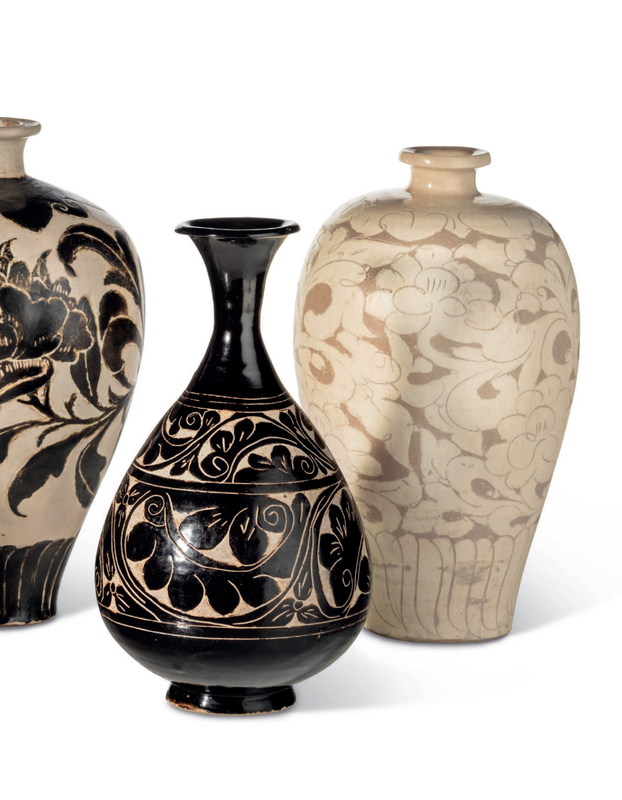




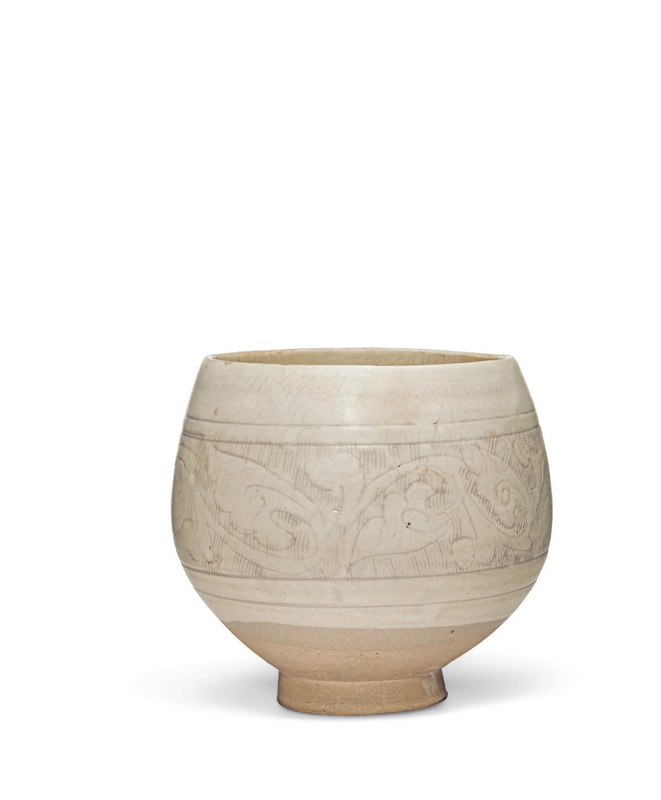



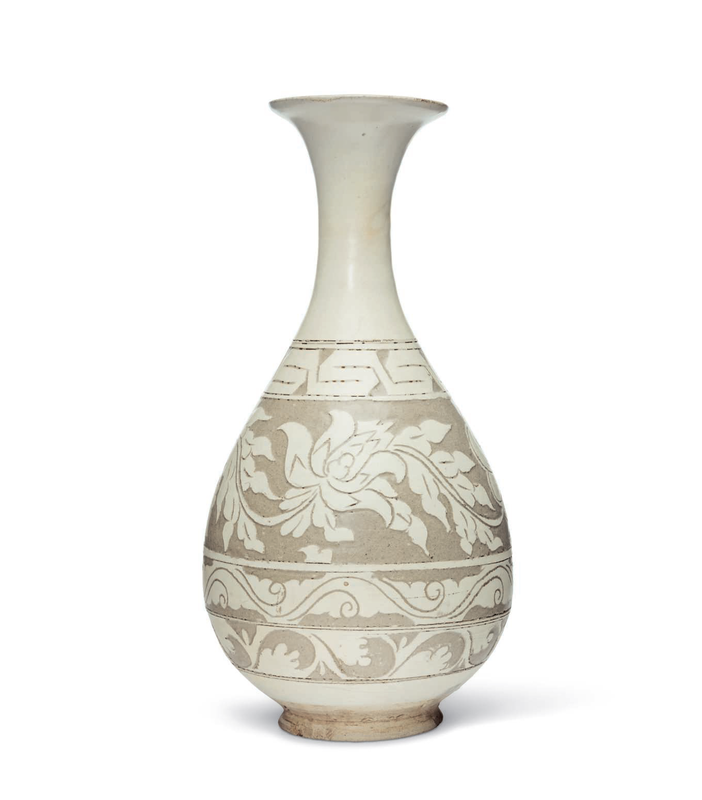


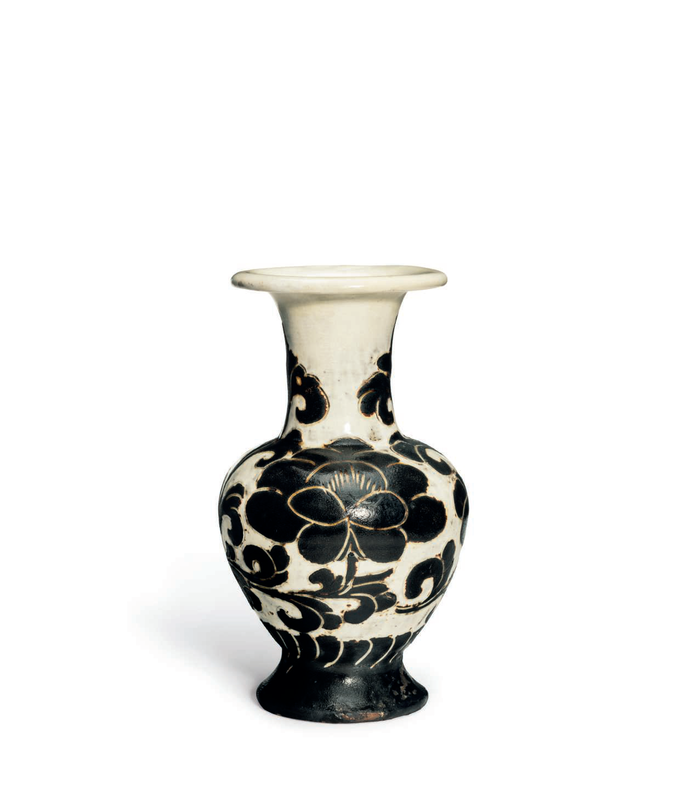

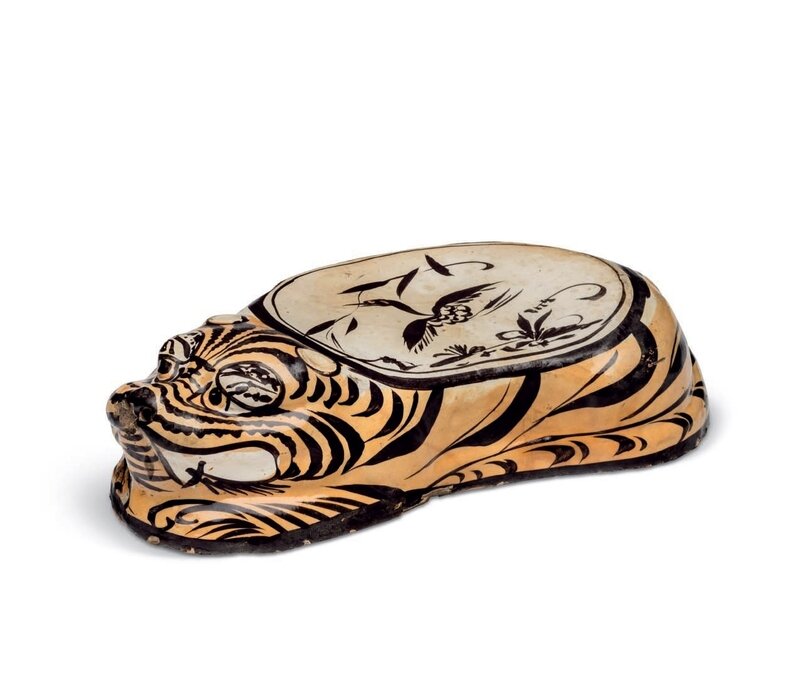







/http%3A%2F%2Fstorage.canalblog.com%2F25%2F04%2F119589%2F129402307_o.jpg)
/http%3A%2F%2Fstorage.canalblog.com%2F03%2F29%2F119589%2F128258154_o.jpg)
/http%3A%2F%2Fstorage.canalblog.com%2F97%2F49%2F119589%2F121199929_o.png)
/http%3A%2F%2Fstorage.canalblog.com%2F20%2F94%2F119589%2F113523451_o.jpg)